Don’t look now – the no-holds-barred Hollywood sex scene is back
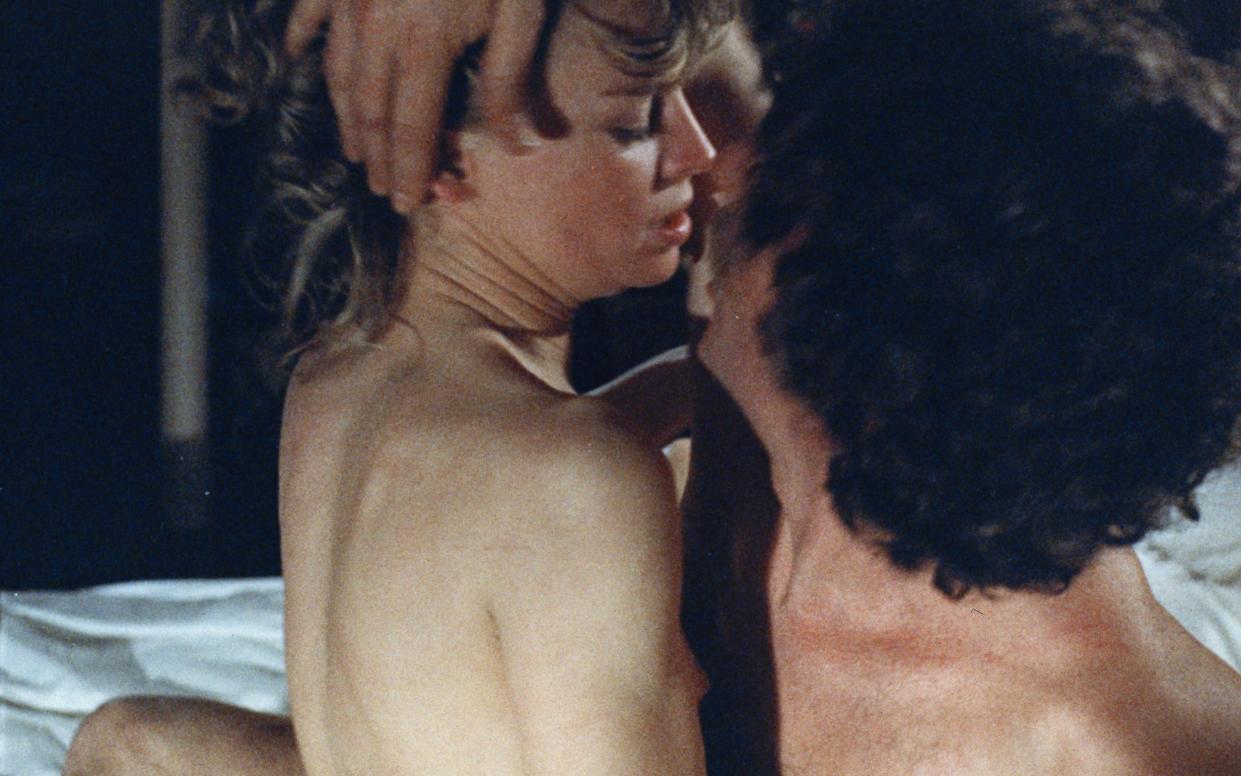
Reports of the death of the sex scene have been greatly exaggerated. Or at least if it was dead, the film set to dominate the Oscars in 2024 just brought it lurching back to life, lightning crackling through its you-know-whats.
Poor Things, an adaptation of the 1992 Alasdair Gray novel now screening in the London Film Festival, is a Frankenstein fable with a lusty streak as thick as the bolt through its neck. In murky Victorian London, a mad scientist type played by Willem Dafoe reanimates the corpse of a pregnant suicide victim – electrodes, bubbling phials, the usual – but only after implanting the brain of her unborn baby inside her head. The result – Emma Stone’s Bella Baxter – is a human being with the body and urges of a woman but the impulse control of a toddler. So when she absconds to mainland Europe with a caddish Mark Ruffalo leading the way, it would be fair to say the ensuing voyage of self-discovery regularly puts to port between her legs.
Audiences at the Venice Film Festival premiere were agape, with one tweeter shrieking that Yorgos Lanthimos’s latest feature was “the raunchiest film of the decade”. It isn’t – the equally graphic Passages, from Ira Sachs, opened in UK cinemas on the morning it premiered. As an American-star-led, Hollywood-sponsored production (it was made by the Disney subsidiary Searchlight Pictures), its full-frontal elan absolutely does make Poor Things virtually unique for its time – though some of us are wondering if it might be the first of a vanguard.
The Netflix erotic thriller Fair Play, starring Phoebe Dynevor and Alden Ehrenreich, has been widely likened to the Demi Moore/Michael Douglas executive saucefest Disclosure at its Sundance premiere in January. And Emerald Fennell’s psychosexual drama Saltburn, which opened the London Film Festival, has been hailed as a modern-day Ripley with full-frontal nudity.
Sex began to vanish from Hollywood in the early noughties, when the industry rebuilt itself around franchises. To justify spiralling budgets, audience appeal had to be maximised, and any content that would push a 12A rating to a 15, or in the US a PG-13 to an R, was out. There were a few notable early exceptions, Mulholland Drive and Monster’s Ball among them. But those films belonged more to the arthouse and independent side of the business, which was pushing forward into ever more provocative terrain as the studios retreated.
A decade later, the #MeToo movement’s reckoning with sexual assault, coercion and worse in the industry meant a sour taste bled into the work. Many actors revolted against Bernardo Bertolucci when a clip resurfaced in 2016 of the Italian director admitting that details of the rape scene in 1972’s Last Tango in Paris – most notably, Marlon Brando’s use of butter as a lubricant – had been withheld from Brando’s 19-year-old co-star Maria Schneider, in order to obtain what Bertolucci described as “her reaction as a girl, not as an actress” (ie genuine female distress).
If so many actresses had been pressured or tricked into playing intimate scenes, didn’t that mean such scenes were exploitative full stop? And where a younger generation might have previously pushed back, Gen Z – well-trained in censorship of themselves and others, having grown up on social media – were largely complaisant with the new prudishness.
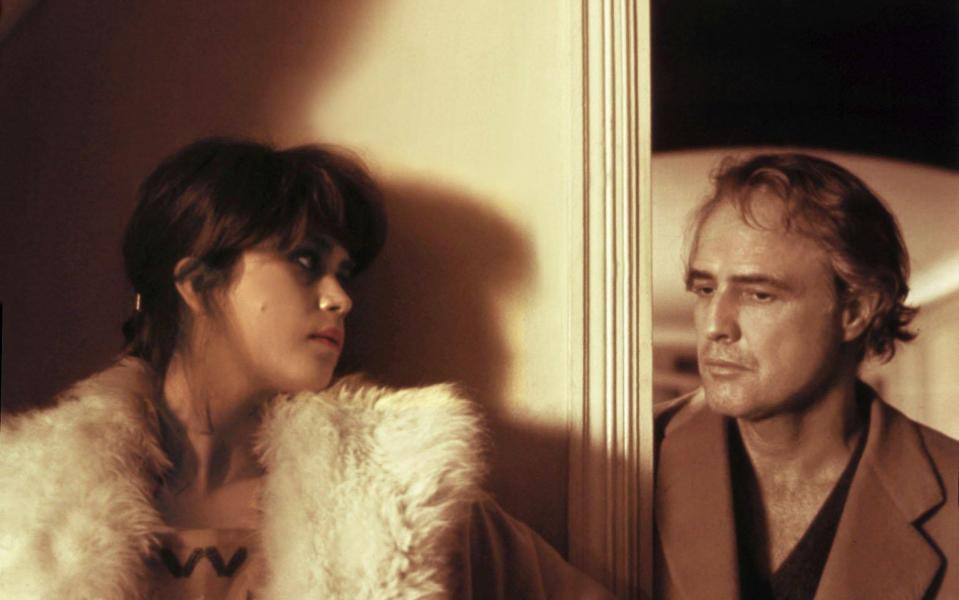
What really startles about Poor Things isn’t that it merely resists this current trend. It’s that it bucks the sex scene right back to the 1970s, which was arguably the most exciting point for them, full stop. Before the cool and glossy couplings of the 1980s and 90s – from American Gigolo to Showgirls, via the ice-queen of them all, 1992’s Basic Instinct – sex on screen was a means for directors and performers to cut loose; to provoke, perplex and stun as well as titillate. Love scenes could be eccentric, satirical, or even political. They could frame human bodies as objects of curiosity as well as desire. They could push artistic boundaries as much as ethical ones.
Not that cinema pre-1970 was a blushing ingenue. The exploitation scene had been nudging at the edge of acceptability for years: in 1959, while Doris Day and Rock Hudson were sharing chaste split-screen phone calls in Pillow Talk, Russ Meyer was ogling sunbathers and skinny-dippers in The Immoral Mr Teas. But it was Meyer’s Beyond the Valley of the Dolls, his 1970 girl-band romp for 20th Century Fox, that brought the sexual revolution to the studios.
Smarting from a string of costly flops, Fox executives had noted the success of Meyer’s 1968 softcore farce Vixen!: $8 million at the US box office, on a budget of less than one percent of that. So they brought the self-styled ‘King of the Nudies’ into the fold, and asked him (with critic Roger Ebert as his co-writer, extraordinarily) to cook up an X-rated spoof of their own smash-hit 1967 melodrama Valley of the Dolls, complete with drug-fuelled orgies and cross-dressing plot-twists.
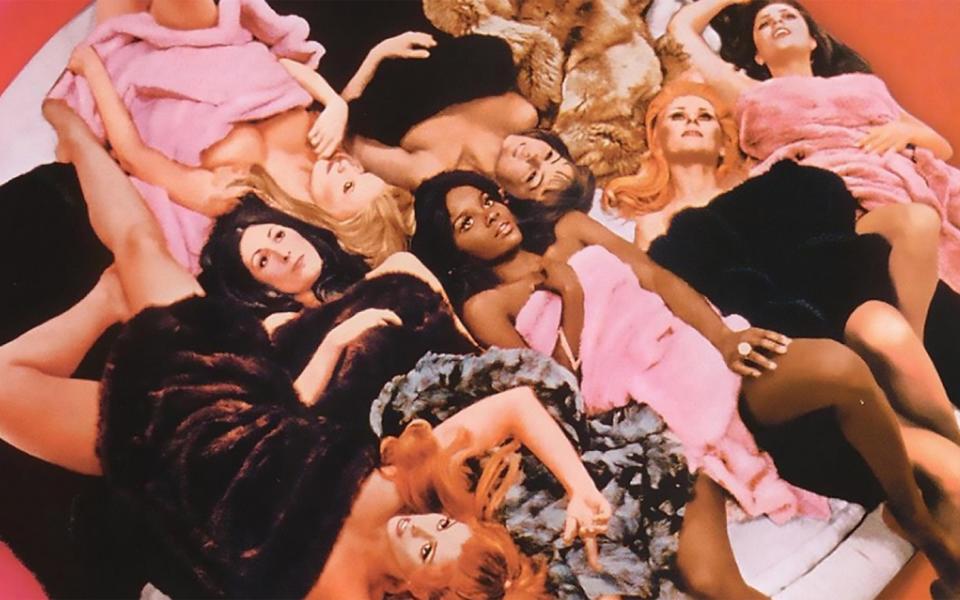
The repressive Hays Code had been formally abandoned two years earlier: this was the censorship charter the industry had imposed on itself in 1934 in the wake of a series of scandals, and which forbade the depiction of (among many activities) “sexual perversion” – a category which included gay and mixed-race relationships, as well as the sort of promiscuous antics (some financially compensated) which appear in Poor Things.
But Beyond the Valley of the Dolls showed the business was ready to slough it off for good. The film was a huge hit – so much so that Fox’s president Richard Zanuck was privately mortified – and other studios quickly joined the new permissive age. Mike Nichols’ Catch-22 adaptation for Paramount, Michael Antonioni’s Zabriskie Point for MGM, and, most notoriously, Stanley Kubrick’s A Clockwork Orange for Warner Bros were among the first studio films to feature full-frontal (female) nudity – while Jack Nicholson’s Drive, He Said for Columbia offered the male equivalent, at a time when seeing such images in public was gaspingly alien to most. Meanwhile in the UK, directors like Ken Russell and Nicolas Roeg brought surreality and showmanship to sex on screen, while blurring gender lines in still-provocative works such as Performance and The Music Lovers.
It was in Don’t Look Now – released 50 years ago, in October 1973 – that Roeg turned the last lingering wisps of propriety to his advantage. American censors insisted that during the love scene between Donald Sutherland and Julie Christie, no visible “humping” must take place: that is, the rise of either star’s hips must not be followed by their fall in the same shot. The raw footage was, well, certainly that.
“People didn’t do scenes like that in those days,” Christie later reflected, adding that there were no prior examples to refer to; she and Sutherland just had to lie on the bed while Roeg bellowed instructions.
So in the edit, Roeg splintered the scene, intercutting the pair’s lovemaking with images of them dressing for dinner afterwards. While done for expediency’s sake, it lent the scene a new poignancy and an eerie undertow. For this couple grieving the loss of their daughter, time no longer worked like it should, and solace was something you snatched at in fragmented parts. And it still felt shiveringly explicit – so much so that for years, Sutherland and Christie found themselves debunking a persistent rumour that their coupling hadn’t been an act.
Before the home video explosion of the 1980s, there was far less stigma to A-list stars playing nude scenes – perhaps since images weren’t isolate-able and shareable by viewers whose interest wasn’t primarily (or, let’s be honest, remotely) artistic. Jane Fonda won the Best Actress Oscar for her performance as the New York call girl Bree Daniels in Alan Pakula’s 1971 thriller Klute – also starring Sutherland.
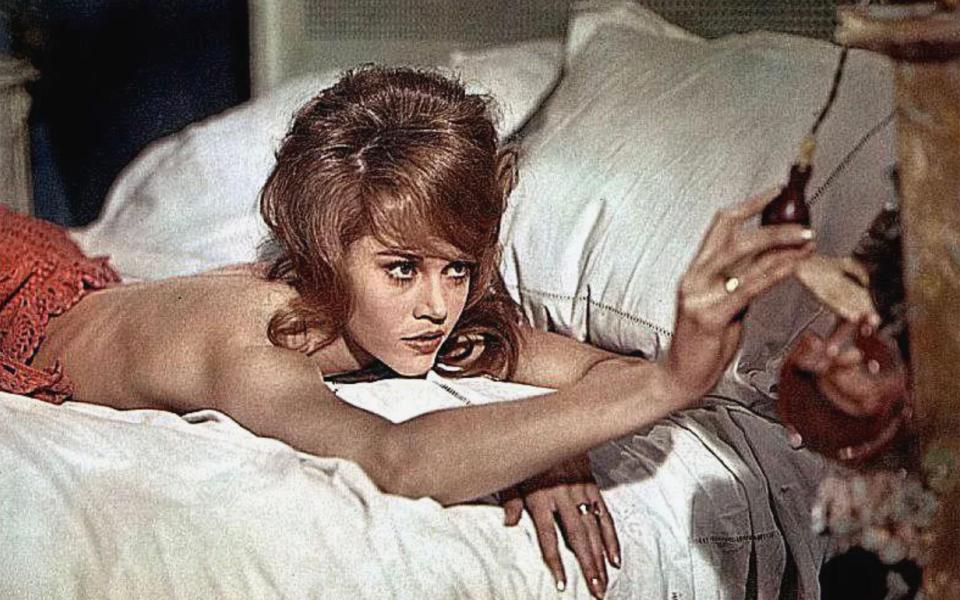
Revealingly, this was the role that pried the 33-year-old Fonda out of her sex-kitten career rut. But while her anti-gravity striptease in Barbarella hadn’t troubled the Academy three years earlier, it had made her a star in the US and beyond. In the UK, especially so: the X-certificate sci-fi romp was the second-most popular film of 1968, after Walt Disney’s The Jungle Book.
As in Poor Things, in which Stone’s Bella temporarily takes up in a Parisian brothel, Klute explores the mechanics and morals of prostitution – now sex work – without judgement, or easy answers.
“When you’re a call girl, you control it,” is how Bree describes the business to her psychiatrist. “It’s an act. That’s what’s nice about it. You don’t have to feel anything.” Had Bella been born 100 years later, she might have said the same thing.
In terms of sheer appetite, though, Bella’s most kindred spirit in 1970s cinema must be George Roundy, Warren Beatty’s playboy hairdresser in 1975’s Shampoo. Over the course of Hal Ashby’s topically charged, Nixon-era-set farce, Beatty manages to bed the wife (Lee Grant), mistress (Julie Christie) and daughter (Carrie Fisher) of Jack Warden’s Beverly Hills big-shot – as well as his own model girlfriend Jill (Goldie Hawn). Again, here were major stars in an overtly sexual picture, and no one batted an eyelid: the only scandalous note was Christie’s declaration at a party that she wished to perform a certain act on Beatty: cue Beatty, along with half of the audience, spraying out their drinks.
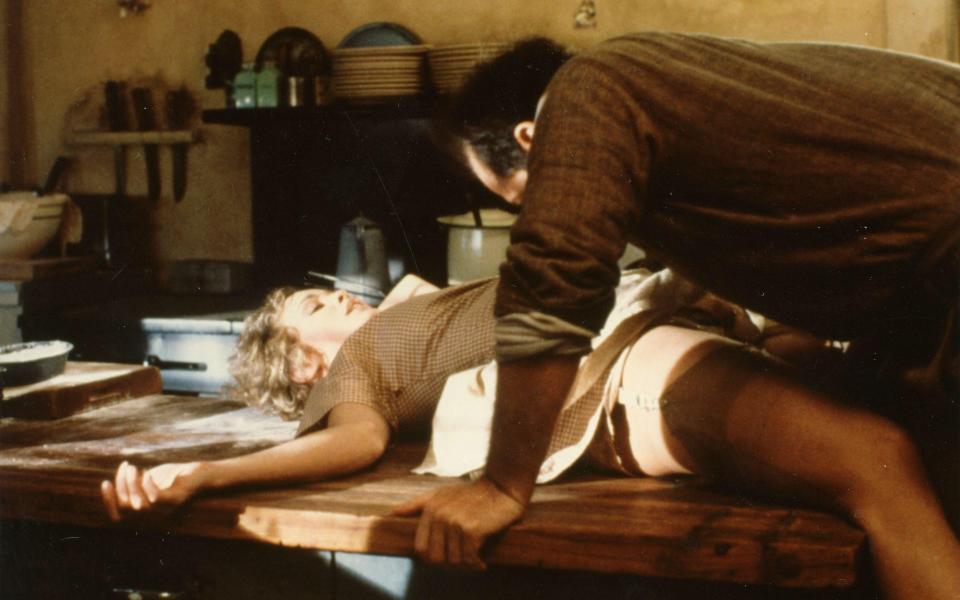
This ethos survived, just about in the early 1980s – notably in The Postman Always Rings Twice, with Jack Nicholson and Jessica Lange – before the new decade’s ad-driven glamour and poise really took hold. But arguably the 1970s sex scene self-combusted in 1979’s Caligula: and what a way to go that was.
Yet again, mainstream stars (Malcolm McDowell, Helen Mirren, Peter O’Toole, John Gielgud) had no compunction about appearing in a lavish carnal epic bankrolled by Penthouse publisher Bob Guccione and directed by Italian sleazemeister Tinto Brass. The critic for Variety famously called it “a moral Holocaust”, while Mirren, maybe putting a brave face on things, described it as “an irresistible mix of art and genitals”.
True, the most outrageous stuff – porn, essentially – was only shot and cut in later, at Guccione’s behest. But per Mirren’s comment, the final result really was a once-in-film-history-only concoction: a respectable cast, a blockbuster budget, and rude bits on display every which way the camera lurched.
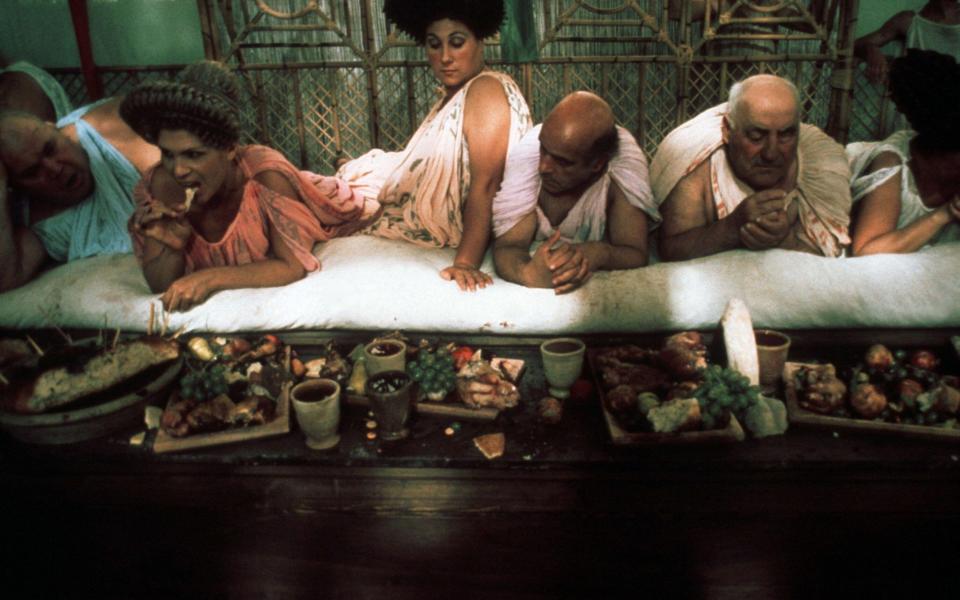
Even the most optimistic libertine would have to concede Poor Things is unlikely to herald more of that. But it arrives in line with another cultural shift, as images of undressed bodies – either posted on social media, or shared privately by lovers – are arguably becoming less controversial today than they were even in the 1970s.
Jennifer Lawrence, whose latest comedy No Hard Feelings featured a nude slapstick sequence, has spoken about the “empowering” quality of filming such scenes on her own terms, after private photographs of the actress were stolen during the 2014 iCloud hack. And at Venice, Lanthimos praised Stone for having “no shame about her body and nudity” – as well as the production’s intimacy coordinator Elle McAlpine, for creating the “very comfortable and intimate environment” required for such work.
Perhaps the best thing you can say about those scenes is that they do feel like work – shot and performed with all the purpose, intrepidity and style of their 1970s forerunners. At a time when footage of any act you can think of (and thousands you can’t) is just a click or two away, the sex in Poor Things shocks because it actually means something. And in 2023 – as it was 50 years ago – that’s truly subversive.


